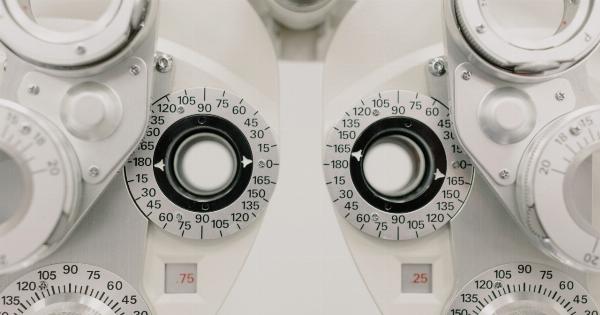Alzheimer’s disease is the most common form of dementia, characterized by progressive cognitive decline, loss of memory, and difficulty in performing daily activities.
According to the World Health Organization, over 50 million people worldwide have dementia, with Alzheimer’s disease accounting for 60-70% of cases. In recent years, research has shown significant advancements in understanding Alzheimer’s disease, and finding a cure or disease-modifying treatment has become one of the top priorities in the field of neuroscience.
Here are some of the latest developments in Alzheimer’s diagnosis:.
Blood tests for Alzheimer’s Disease
Researchers have been exploring the role of biomarkers in Alzheimer’s disease diagnosis for several years now. Biomarkers are measurable indicators of a biological state or condition, such as levels of certain proteins or cell abnormalities.
In Alzheimer’s disease, biomarkers can help detect the presence of amyloid plaques, tau protein, and other factors that contribute to the disease process.
Blood tests for Alzheimer’s disease have been developed which can indicate the presence of amyloid plaques and tau proteins in the brain.
This blood test measures biomarkers such as phosphorylated tau and beta-amyloid (Aβ) 42 peptides that are known to be present in higher concentrations in people with Alzheimer’s disease. This approach is less invasive than cerebrospinal fluid sampling, which is the current method used to measure these biomarkers in patients.
Early diagnostic blood tests could also help identify patients for clinical trials and monitor disease progression.
Imaging for Early Diagnosis of Alzheimer’s Disease
Imaging techniques have been used for several years to help diagnose Alzheimer’s disease and track its progression.
Techniques such as magnetic resonance imaging (MRI) and positron emission tomography (PET) scans help identify structural changes in the brain and the presence of amyloid plaques and tau protein. These techniques can be used to diagnose the disease and track its progression at an early stage when there is still time to intervene and slow down the disease process.
Artificial Intelligence for Alzheimer’s Diagnosis
Artificial intelligence (AI) and machine learning (ML) algorithms have been increasingly applied in the diagnosis and treatment of Alzheimer’s disease.
AI and ML can be used to analyze large datasets, including brain scans, genetic data, and clinical information, to identify patterns and markers that predict the likelihood of developing Alzheimer’s disease.
AI tools can also be used to differentiate Alzheimer’s disease from other forms of dementia.
For example, a recent study used machine learning algorithms to develop a diagnostic tool that was able to distinguish Alzheimer’s disease from frontotemporal dementia (FTD) with 90% accuracy. This could have significant implications for treatment as FTD has different treatment options and strategies compared to Alzheimer’s disease.
Blockchain for Alzheimer’s Disease Data Management
Blockchain technology has the potential to revolutionize healthcare data management. With blockchain, data can be securely and transparently stored and shared between healthcare providers, researchers, and patients.
This could lead to better collaborations, faster diagnosis, and more effective treatments. The decentralized nature of blockchain makes it particularly suitable for Alzheimer’s disease data management as it ensures patient data privacy and security.
Blockchain-based solutions are already being developed for clinical trial data management, patient data sharing, and other healthcare applications.
In Alzheimer’s disease research, blockchain technology could help researchers access large, complex datasets, and facilitate collaborations between institutions.
Challenges in Alzheimer’s Disease Diagnosis
While advances in biomarkers, imaging, AI, and blockchain technology offer new hope for effective Alzheimer’s diagnosis and treatment, there are also significant challenges in diagnosing and treating the disease.
One of the biggest challenges is that Alzheimer’s disease can be difficult to distinguish from other forms of dementia, such as FTD or Lewy body dementia. This is particularly true in the early stages of the disease when symptoms are still mild and non-specific.
Another challenge is that there is currently no cure for Alzheimer’s disease. While some treatments can help manage symptoms, such as memory loss or anxiety, there are no treatments that can stop or reverse the disease process.
This means that early detection through diagnostic tools such as blood tests or imaging is crucial for the development of disease-modifying treatments.
Conclusion:
The developments in Alzheimer’s diagnosis are offering new hope for early detection and treatment of the disease.
Blood tests, imaging techniques, AI, and blockchain technology are all playing a crucial role in advancing Alzheimer’s research. These tools can help researchers identify the disease at an earlier stage, develop better treatments, and improve patient outcomes.
However, there are still significant challenges in diagnosing and treating Alzheimer’s disease, and research is ongoing to develop more effective approaches to address the disease.































